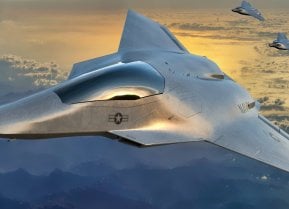The Worst Fighter Plane Ever: The De Havilland Sea Vixen
The De Havilland Sea Vixen was a British twin-engine, twin-boom fighter aircraft with an unconventional design, featuring an off-set cockpit and extended fuel capacity in its unique tail structure. Introduced in the 1950s for carrier operations, it showed early promise by becoming the first British fighter to break the sound barrier.
What You Need to Know: The De Havilland Sea Vixen was a British twin-engine, twin-boom fighter aircraft with an unconventional design, featuring an off-set cockpit and extended fuel capacity in its unique tail structure. Introduced in the 1950s for carrier operations, it showed early promise by becoming the first British fighter to break the sound barrier.
-However, its innovative design led to significant stability issues and a high accident rate. Of the 145 Sea Vixens produced, 55 were lost to non-combat incidents, resulting in 51 pilot fatalities.
-Despite efforts to improve its performance, the aircraft remained problematic and was retired in 1972, marking a challenging chapter in British aviation history.
-The De Havilland Sea Vixen had a twin-boom twin-engine design, and the cockpit was off-set and not in the middle of the airplane.
De Havilland Sea Vixen: The Flawed Fighter That Struggled to Soar
The twin tail boom was supposed to give it more fuel capacity. These features probably led to all the accidents. The British flew them off carriers and stubbornly clung on for 20 years even though the F-4 Phantom was available. There were only 145 Sea Vixens in service over that time and 55 succumbed to some kind of mishap and were lost. And that wasn’t from combat.
Not a Bad Start
The Sea Vixen started off with some promise. A British test pilot by the name of John “Cats Eyes” Cunningham peered into the sky and took it to supersonic speeds in 1951. This was the first British fighter to break the sound barrier. It flew better than the designers thought, and they figured its “all-metal fuselage featuring swept and eventually foldable wings,” would be perfect for carriers, according to a historical snapshot from BAE Systems.
The airplane had Rolls-Royce Avon 208 turbojets that were deemed sufficient at the time. But trouble started early. Just a year later in 1952, as the Farnborough Air Show, a Sea Vixen broke apart during a high-speed, high-G maneuver. The pilot was trying to create a sonic boom to wow the crowd, but the airplane’s engines hurtled into the crowd and killed 29 people along with the pilot and flight engineer.
They Would Not Give Up
This should have been enough to cancel the program right there. But designers tried to save the airplane. They constructed the air frame stronger and made other adjustments over the next 12 months and then put another prototype in the air. The airplane did well in tests off carriers and the Royal Navy ordered 110 models. The navy then wanted a better radar which slowed down development. By 1959, it was ready for deployment.
Thankfully, the Sea Vixen never saw aerial combat, but it did patrol in various dust-ups and troop deployments the British were involved in during the 1960s. The closest it came to being used in anger was when they fired their weapons at a wrecked tanker that ran aground off Cornwall in 1967. This was done to stifle the oil leak from creating more environmental damage.
It could only carry four air-to-air missiles. It usually couldn’t break the sound barrier and flew rarely over 690 miles per hour.
Why A Mess
Hushkit.net called it a “death trap.” More than half of the 55 accidents were deadly. 51 aviators were killed flying the Sea Vixen. Some of the incidents were unlucky and bizarre. Once on a carrier landing, a Sea Vixen hit several parked airplanes, destroyed them, and somehow managed to take off again and land at a shore base with eight feet of its right-wing missing.
It finally retired in 1972. But some British naval personnel said the airplane had life left in it. They complained it could still be used even though the weapons were outdated, and the thing was dangerous to fly. The Sea Vixen once in a while makes appearances at air shows, let’s hope the crew and spectators survive.
Expert Biography
Dr. Brent M. Eastwood is the author of Humans, Machines, and Data: Future Trends in Warfare. He is an Emerging Threats expert and former U.S. Army Infantry officer. You can follow him on Twitter @BMEastwood. He holds a Ph.D. in Political Science and Foreign Policy/ International Relations.
Image Credit: Creative Commons.


